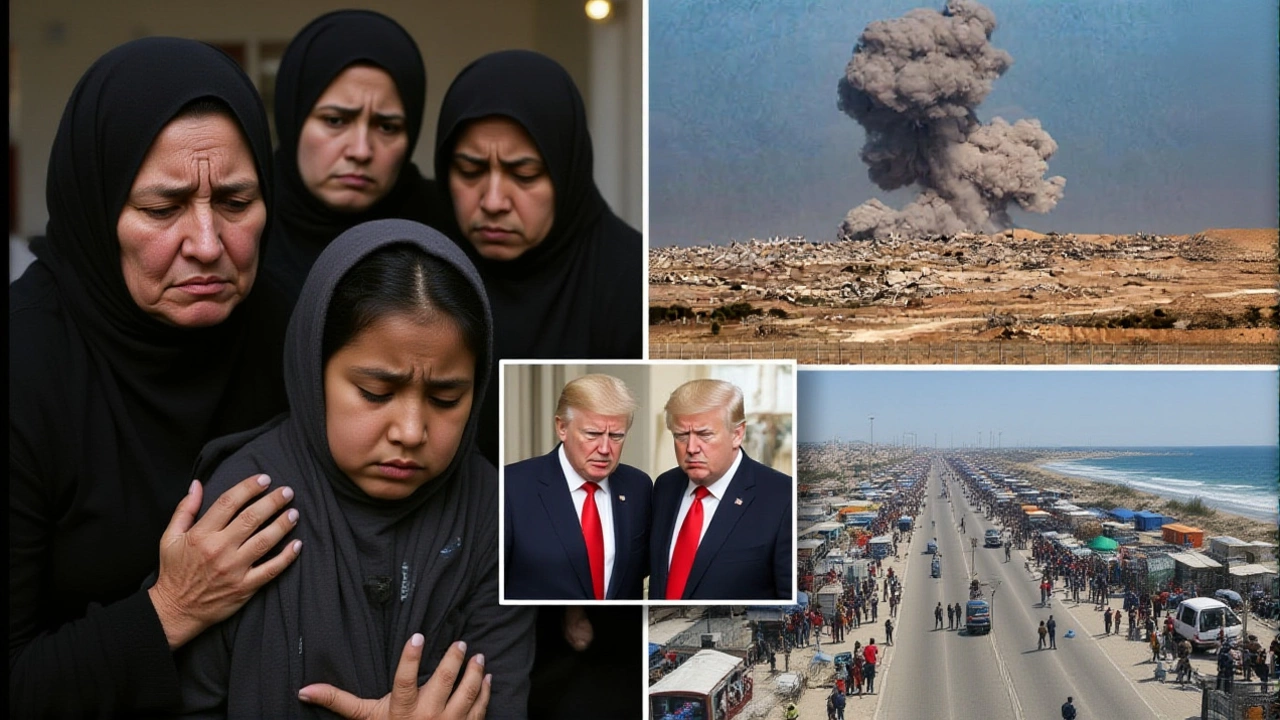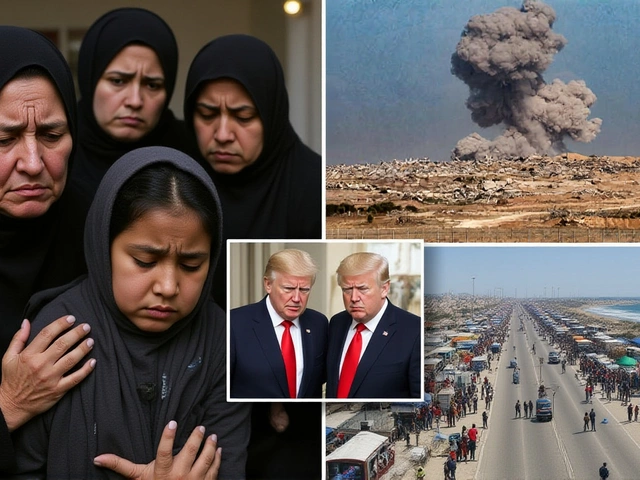Hamas Accepts Parts of Trump Gaza Peace Plan, Omits Tunnel Issue

When Donald Trump, former President of the United States unveiled his Middle East peace blueprint in January 2024, few expected a response from the militant faction Hamas to be anything other than a dismissal. Yet on , Hamas announced a partial acceptance of the plan, agreeing to release all Israeli prisoners and to hand over Gaza’s civil administration to a body of Palestinian technocrats. The move signals a potential shift, but the conspicuous silence on the sprawling tunnel network leaves a critical gap in any lasting settlement.
Background to the Trump Peace Initiative
The proposal, formally titled the "Peace to Prosperity" framework, promised a phased cease‑fire, a $50 billion investment in the Palestinian economy, and a controversial prisoner‑exchange formula. It also called for the establishment of a neutral, technocratic administration in the Gaza Strip, backed by a pan‑Arab consensus. While many international actors dismissed the plan as unrealistic, its emphasis on economic development and a clear governance roadmap earned a cautious nod from some regional players.
Hamas’s Partial Acceptance and What It Entails
In a brief statement released through its media wing, Hamas said it had “accepted certain elements” of the Trump proposal, explicitly committing to the release of "all Israeli prisoners, living and dead," provided that "field conditions" for a safe exchange are met. The group also pledged to "immediately enter negotiations through agreed mediators" to flesh out the details.
"We are ready to discuss a practical, phased implementation that respects the dignity of both peoples," said Ibrahim Al‑Mansoor, a senior Hamas negotiator. "Our acceptance does not mean we abandon our legitimate resistance, but it does show a willingness to explore a political solution that benefits Gazans."
The announcement marked a noticeable departure from Hamas’s longstanding stance of direct governance since it seized control of the Gaza Strip in 2007. Under the new proposal, a council of independent technocrats—drawn from Palestinian civil society, academia, and the private sector—would manage health, education, and infrastructure, while security oversight would remain under a joint Israeli‑Palestinian mechanism.
Missing Pieces: The Tunnel Issue
Perhaps the most striking omission from Hamas’s statement is any reference to the extensive tunnel network that runs beneath Gaza. Estimates from the Israeli Ministry of Defense put the total length of operational tunnels at over 30 kilometres, with more than 300 individual passages used for smuggling weapons, goods, and fighters.
Security analysts warn that without a concrete plan for the demolition or monitoring of these tunnels, any cease‑fire could be fragile at best. "Tunnels are Hamas’s strategic lifeline," notes Dr. Leila Haddad, a Middle‑East security scholar at the University of London. "Leaving them unaddressed is like signing a peace treaty while ignoring the hidden weapons beneath the table."
Regional Reactions and Potential Roadblocks
Egyptian and Qatari officials, both key mediators in past negotiations, welcomed the partial acceptance but cautioned that "the devil is in the details," especially regarding the tunnel question and the verification of prisoner releases.
Israeli Prime Minister Benjamin Netanyahu issued a terse statement: "Any concession that does not guarantee the destruction of terrorist infrastructure is unacceptable." His government has repeatedly insisted that any exchange must be paired with an irreversible dismantling of the tunnel system.
What Comes Next for Gaza Governance?
The technocratic council envisioned by the Trump plan would likely be composed of figures such as Dr. Saeed Al‑Khatib, former rector of Al‑Azhar University, and Ms. Rania Abu Salah, a noted health‑sector reformer. Their mandate would be to rebuild Gaza’s crumbling infrastructure—estimated at $15 billion in damage since 2023—while coordinating closely with UNRWA and international donors.
However, Hamas’s willingness to cede administrative control hinges on "field conditions" that remain vague. Observers suspect that the group is looking for guarantees—perhaps a freeze on Israeli airstrikes or a staggered lifting of the blockade—before relinquishing power.
Key Facts
- Announcement date:
- Primary acceptance: release of all Israeli prisoners and transition to a technocratic Gaza administration.
- Omitted issue: no mention of the >30 km tunnel network.
- Proposed technocratic council could include up to 15 independent Palestinian experts.
- Israeli condition: demolition or strict monitoring of tunnels before any prisoner swap.
Potential Timeline
- Mid‑May 2024 – Initial mediator‑led talks commence in Cairo.
- Late June 2024 – Draft agreement on prisoner‑exchange logistics prepared.
- Early August 2024 – International monitoring mission assesses tunnel status.
- September 2024 – Formal handover of Gaza’s civil administration, contingent on security guarantees.
Frequently Asked Questions
How does Hamas’s partial acceptance affect Israeli prisoners?
Hamas has committed to releasing "all Israeli prisoners, living and dead" once specified field conditions—such as verified cease‑fire zones and secure hand‑over points—are satisfied. This could lead to the return of around 200 detainees held since the 2023 conflict, provided Israel agrees to parallel security steps.
What will the proposed technocratic administration look like?
The plan envisions a council of up to 15 independent Palestinian experts—doctors, engineers, educators—selected by a consensus of Arab and Islamic bodies. They would manage health, education, water, and electricity services, while security would be overseen jointly by Israel, the Palestinian Authority, and an international monitor.
Why are the Gaza tunnels not addressed in Hamas’s statement?
Tunnels are a core component of Hamas’s military capability and a major bargaining chip. By omitting them, Hamas may be signaling that it still seeks leverage, or it hopes the issue can be negotiated later under more favourable conditions.
What are the "field conditions" required for the prisoner exchange?
Field conditions likely include verified cease‑fire corridors, safe withdrawal routes for released prisoners, and perhaps a temporary freeze on Israeli airstrikes. Both sides will need third‑party monitors to confirm compliance before any exchange can proceed.
What are the chances the Trump peace plan will be fully implemented?
Analysts remain skeptical. While Hamas’s partial acceptance is a positive signal, the unresolved tunnel issue, Israeli security demands, and the need for broad Arab consensus create multiple hurdles. Successful implementation will depend on sustained diplomatic pressure and clear, enforceable guarantees from all parties.
